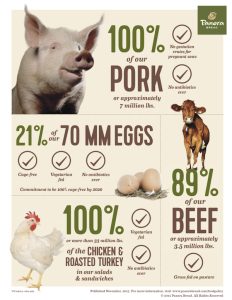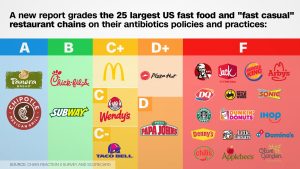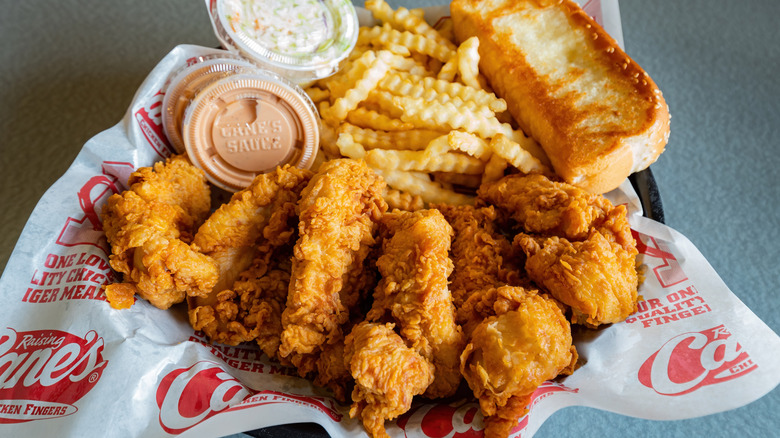
Chick-Fil-A has decided use meat treated with antibiotics for their famous chicken after sixty years, getting rid of their former NAE (No Antibiotics Ever) policy, and changing it to NAIHM (No Antibiotics Important To Human Medicine.) This change happened near the start of spring 2024.
According to Chick-Fil-A’s website, the change was made “to maintain supply of the high-quality chicken you expect from us.” They also note that the new policy “allows use of animal antibiotics only if the animal and those around it were to become sick.” They claim that the other aspects of their chicken will stay the same. Customers can still expect “real, white breast meat, with no added fillers, artificial preservatives, or steroids.”
 Around a month after Chick-Fil-A made this change, Panera Bread decided to toss the same policy and accept antibiotic-treated meats. This change upset people a lot, if not more than Chick-Fil-A, because Panera has always been prideful about their grass-fed, pasture-raised food. In March, Panera started removing signs and artwork (see image)–removing any language about its animal welfare practices. According to Reuters, Panera’s new, looser policy allows the use of some antibiotics in pork and turkey products, and allows chicken and cattle to be fed with feed containing animal products.
Around a month after Chick-Fil-A made this change, Panera Bread decided to toss the same policy and accept antibiotic-treated meats. This change upset people a lot, if not more than Chick-Fil-A, because Panera has always been prideful about their grass-fed, pasture-raised food. In March, Panera started removing signs and artwork (see image)–removing any language about its animal welfare practices. According to Reuters, Panera’s new, looser policy allows the use of some antibiotics in pork and turkey products, and allows chicken and cattle to be fed with feed containing animal products.
Both of these changes were disappointing, and they have people debating whether or not these policy changes will mark a decline in food quality across the board. Other fast food chains, like McDonalds, or Burger King, have used antibiotics in their food for decades, but Panera and Chick-Fil-A were among those that made more sustainable policies, so their shift is disheartening for some.
One nutritionist told Healthline, “This decision might not just affect them but could encourage a shift in the entire industry away from prioritizing the well-being of animals and the health of consumers.”
The concern with antibiotic use in meats is that the overconsumption could cause bacteria to become resistant to antibiotics–leaving the human species susceptible in the future.
Pediatric dietician Emma Shafqat told Healthline, “There are already certain strains of bacteria that are now resistant to many different types of antibiotics, for example, MRSA, Clostridium difficile, and the bacteria that causes multi-drug resistant tuberculosis…the biggest concern is that new strains of bacteria will develop, and we will not be able to treat them.”

Aside from the health impacts, some customers have even claimed that they can taste the change, but is the change really significant? Can anyone really taste it, or are people just overreacting?
One reason could be that the antibiotics are interfering with the way the chicken is prepared. When antibiotics are added into food, it can affect the food’s pH level, causing it to be cooked differently, meaning people are actually tasting something different. Another reason could be the Placebo Effect. Since people are aware of the antibiotics now, their brains will trick them into believing that something tastes different.
What will this mean for Chick-Fil-A? Will it get them less sales? More? Will people even be worried about it in a few weeks? Was the change a necessary one to keep up with supply? Will more restaurants follow suit in loosening their policies? These answers will likely come in the coming months.







